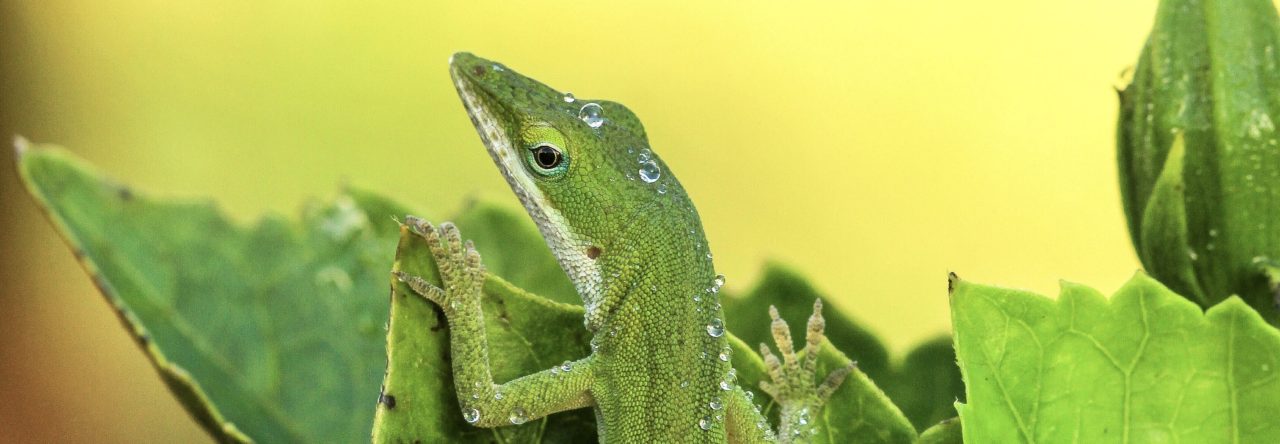
Adult male Anolis onca from Isla de Margarita basking, by Gabriel N. Ugueto
We all know that anoles have subdigital lamellae; however, there is one species in which these lamellae are lacking: Anolis onca, which is known for being a sand-dwelling anole. In 2011, Dr. Jennifer Velásquez and colleagues published a paper in SABER, in which they studied the differences in thermal ecology and the activity pattern of male and female Anolis onca in Araya Peninsula, Venezuela, during the dry and wet season in a dry forest (10 m a.s.l). This study was conducted from September 2004 to April 2005, during which time 56 individuals were captured (15 females and 41 males). Dr. Velásquez and colleagues measured body temperature (Tb), substrate temperature (Ts) on the capture site, and air temperature (Ta).
Dr. Velásquez and colleagues found that in males and females, the Tb was higher during the dry season compared to the wet season: 33.6 ºC (30.0 – 37.2; n = 23) and 33.6 ºC (30.0 – 35.5; n = 7) for males and females, respectively, during the rainy season, and 34.4 ºC (33.0 – 35.8; n = 18) and 34.3 ºC (34.0 – 35.7; n = 8) during the dry season. Mean Ta and Ts were also higher during the dry season compared to the rainy season; during the dry season, Ta was 37.4 ± 0.69 ºC (n = 30) and Ts was 38.4 ± 0.69 ºC (n = 30), while during the rainy season, Ta was 33.9 ± 0.82 ºC (n = 26) and Ts was 34.9 ± 1.58 ºC (n = 26). In addition, Dr. Velásquez and colleagues found that A. onca changes its timing of activity depending on the season. During the rainy season, A. onca is more active from 9:00 am to 10:00 am, and during the dry season from 12:00 am to 1:00 pm; during both seasons, there is low activity from 3:00 pm to 5:00 pm.
The authors argued that there is a relationship between Tb, Ta and Ts during the rainy and the dry season, in which the thermophysiology of A. onca is influenced by the climate variability of the microhabitat it occupies, suggesting that this species is a thermoconformer. In conclusion, the body temperature of this species varies during the day and across seasons, and it also varies as air and substrate temperature vary.
Abstract:
Aspects of the thermal ecology and activity pattern of the lizard, Anolis onca, during the dry and rainy season, and both periods in a belt of xerophytic forest located in the Araya Peninsula, Sucre state, Venezuela. The mean body temperature of A. onca was 33.9 ± 1.50 ºC in both periods to A. onca, while it reached 34.4 ± 0.75 ºC during the drought period and 33.6 ± 1.87 °C during the rainy period. In both climate periods, we found positive and significant correlations between body temperature with air and substrate temperature. The results suggest that thermoregulation is done passively, influenced by microhabitat temperature (air and substrate). There was a unimodal daily activity pattern during both periods. The thermal niche breadth was greater in males, while niche overlap between sexes was higher during the rainy period.
- Los Andes como Motor de la Diversidad Fisiológica en los Anolis - January 16, 2025
- The Andes Are a Driver of Physiological Diversity in Anolis Lizards - January 16, 2025
- Observaciones de una Salida de Campo para Estudiar Anoles en Puerto Rico - October 3, 2021


Leave a Reply